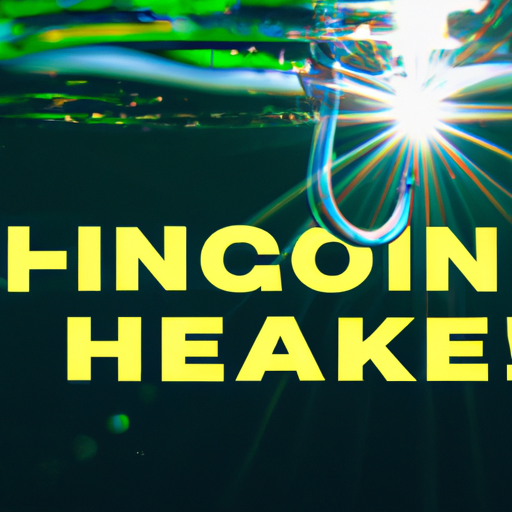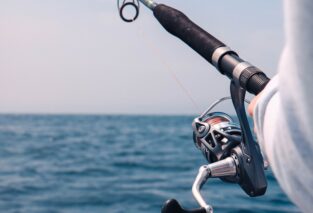If you’re new to the world of fishing, navigating through the jargon and terminology can seem overwhelming at first. But fear not! “Decoding Fishing Lingo: Terms Every New Fisher Should Know” is here to save the day. This handy guide is packed with all the essential terms and phrases that every novice angler needs to know. From “casting” to “lunker,” you’ll soon be speaking the language of seasoned fishermen and reeling in the big catches with confidence. Get ready to decode the mysteries of fishing lingo and take your angling skills to the next level!
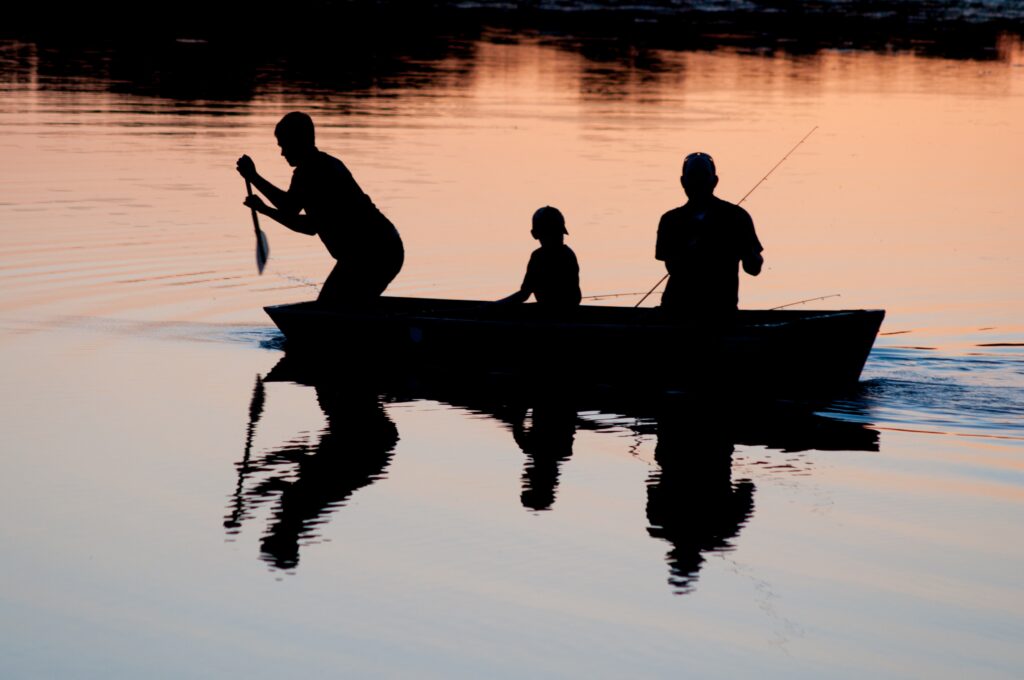
Basic Fishing Terms
Bait
Bait refers to any type of food or attractant used to entice fish to bite on a hook or lure. It can be natural, such as worms, minnows, or insects, or artificial, such as plastic worms or synthetic baits. Choosing the right bait for the fish species you are targeting is essential for a successful fishing trip.
Lure
Lures are artificial fishing baits designed to mimic the appearance and movement of prey fish. They come in various shapes, sizes, and colors, and are usually made of plastic, metal, or wood. Lures are used to catch fish by attracting their attention and provoking them to strike.
Tackle
Tackle is a general term that refers to all the equipment and gear used in fishing, including rods, reels, lines, hooks, and lures. Having the right tackle for the type of fishing you plan to do is crucial for a smooth and enjoyable fishing experience.
Rod
A fishing rod is a long, flexible pole used to cast a fishing line into the water and reel the fish in. Rods come in different lengths, materials, and actions, which determine their sensitivity and casting ability. Selecting the appropriate rod for the type of fishing you intend to do is essential for optimal performance.
Reel
A fishing reel is a cylindrical device attached to a fishing rod that holds and releases the fishing line. It is used to control the line’s length and tension and to reel in the fish once it is hooked. Reels come in various types, such as spinning reels, baitcasting reels, and fly reels, each suited for different fishing techniques.
Fishing Techniques
Casting
Casting is a fundamental fishing technique where the angler throws or “casts” the fishing line and bait or lure into the water. This technique requires proper coordination of rod and reel movements to achieve distance and accuracy. Casting is commonly used in both freshwater and saltwater fishing.
Trolling
Trolling is a fishing method where the angler drags a baited line behind a moving boat. This technique allows the bait or lure to cover a large area and targets fish that are actively swimming or feeding near the surface or at a specific depth. Trolling is often used in deep-sea fishing and during boat trips on large bodies of water.
Jigging
Jigging is a technique that involves moving a weighted lure up and down in the water to attract fish. This method imitates the movement of injured or dying prey, which entices predatory fish to strike. Jigging is particularly effective for catching species like walleye, bass, and cod, and can be done from a boat or shore.
Drifting
Drifting is a fishing technique where the angler allows the boat or current to carry their bait or lure along with the water’s movement. This method is especially useful in rivers or streams with moderate currents, as it allows the bait to appear more natural and cover a larger area. Drifting is commonly used for catching trout, salmon, and other freshwater species.
Fly Fishing
Fly fishing is a method that uses a specialized rod, reel, and line to cast lightweight artificial flies to fool fish into biting. This technique requires skill and finesse, as the angler must accurately present the fly on the water’s surface and mimic the insect’s movements. Fly fishing is most commonly associated with freshwater trout fishing, but it can also be used in saltwater environments.
Fish Anatomy
Gills
Gills are the respiratory organs of fish, allowing them to extract oxygen from the water. Located on the sides of the fish’s head, gills consist of thin filaments that absorb oxygen and release carbon dioxide. Understanding how fish breathe through their gills is important for handling and releasing fish properly to ensure their survival.
Fins
Fins are external appendages that allow fish to swim and maneuver in the water. There are several types of fins, including the dorsal fin (on the fish’s back), the pectoral fins (on the fish’s sides), the pelvic fins (on the fish’s underside), and the caudal fin (the tail fin). Each fin serves a specific purpose, such as stability, steering, and propulsion.
Scales
Scales are the small, overlapping plates covering a fish’s body. They serve as a protective outer layer, providing defense against predators and reducing friction in the water. The size, shape, and pattern of scales vary among fish species and can be useful for identifying different types of fish.
Mouth
The mouth of a fish is where it takes in food and expels waste. The size and shape of a fish’s mouth can indicate its feeding habits and diet. Fish with large, toothy mouths are often predators that feed on other fish, while those with small, narrow mouths may feed on insects or plankton.
Tail
The tail of a fish, also known as the caudal fin, is a vital part of its locomotion. Different fish species have tails with various shapes, such as forked, rounded, or lunate (crescent-shaped), which affect their swimming speed and agility. Understanding the anatomy of a fish’s tail can help anglers choose the right lures or flies to mimic natural prey.
Fishing Gear
Fishing Line
The fishing line is a critical component of an angler’s gear, as it connects the fishing rod to the bait or lure. Fishing lines come in different materials, such as monofilament, fluorocarbon, and braided, each with its own strengths and weaknesses. Choosing the appropriate fishing line based on the target species, fishing technique, and environmental conditions is essential for a successful fishing trip.
Hooks
Hooks are devices used to catch fish by penetrating their mouths when they bite on the bait or lure. They come in various sizes, styles, and strengths, depending on the fish species and fishing method. Properly selecting and handling hooks is crucial for ethical fishing practices and fish health.
Sinkers
Sinkers, also known as weights or leads, are used to make the bait or lure sink to a desired depth in the water. They come in different shapes and sizes, such as split shots, bullet weights, or egg sinkers, and are typically made of lead or other dense materials. Choosing the right sinker is crucial for achieving the desired fishing depth and controlling the presentation of the bait or lure.
Bobbers
Bobbers, also called floats or corkies, are buoyant devices attached to the fishing line to indicate when a fish bites. They float on the surface of the water and submerge when a fish pulls on the line. Bobbers come in various shapes, sizes, and colors, allowing anglers to adjust for different fishing conditions and fish species.
Nets
Fishing nets are used to catch fish by surrounding them and preventing their escape. They come in various styles and sizes, such as casting nets, landing nets, and dip nets, each suited for different fishing situations. Nets are often used for catch-and-release fishing or for landing larger fish species.

Fish Species
Bass
Bass are a popular freshwater fish species prized for their sporty nature and delicious taste. They belong to the family of perciformes and include both largemouth bass and smallmouth bass. Bass are known for their aggressive strikes and fighting ability, making them a favorite target for many anglers.
Trout
Trout are freshwater fish species often associated with pristine rivers and streams. They belong to the salmonid family and include species like rainbow trout, brown trout, and brook trout. Trout are highly sought after for their beauty and challenging behavior, as they are known for their wily nature and selective feeding habits.
Salmon
Salmon are anadromous fish, meaning they are born in freshwater, migrate to the ocean to grow, and return to their natal rivers to spawn. They are known for their strength and size, with species like Chinook salmon and coho salmon being highly prized by anglers. Salmon fishing can be found in both freshwater and saltwater environments.
Catfish
Catfish are bottom-dwelling fish known for their whisker-like barbels and smooth, scaleless skin. They are primarily freshwater species but can also be found in some brackish and saltwater habitats. Catfish can reach impressive sizes and are widely sought after by anglers for their excellent taste and challenging fights.
Snapper
Snapper is a general term used to describe a variety of saltwater fish species found in warm coastal waters. Popular snapper species include red snapper, mangrove snapper, and yellowtail snapper. Snappers are known for their tasty flesh and can be caught using a variety of fishing techniques, such as bottom fishing or trolling.
Fishing Locations
Freshwater
Freshwater fishing takes place in rivers, lakes, ponds, and other bodies of water that do not contain salt. These ecosystems have their unique fish species and offer diverse fishing experiences. Freshwater fishing is popular for its accessibility, calm waters, and tranquil surroundings, making it an ideal choice for beginners and families.
Saltwater
Saltwater fishing occurs in oceans, seas, bays, and coastal areas, where the water has a higher salt content. Saltwater environments are home to a wide range of fish species, including those that migrate from freshwater to saltwater and vice versa. Saltwater fishing offers excitement, variety, and the possibility of catching larger and more challenging fish.
Rivers
Rivers provide a dynamic fishing environment, with flowing water, diverse habitats, and a variety of fish species. Depending on the river’s location and characteristics, anglers can enjoy fishing for trout, salmon, bass, catfish, and more. River fishing often involves techniques such as casting, drifting, or fly fishing and requires adaptability to changing water conditions.
Lakes
Lakes offer a versatile fishing experience, ranging from calm, still waters to large, open expanses. They are home to diverse fish species, including bass, trout, pike, muskie, and panfish. Lake fishing can be done from the shore or a boat and allows anglers to explore different depths and structures in search of their target species.
Ponds
Ponds are smaller bodies of water often found in parks, private properties, or rural areas. They can be natural or man-made and are stocked with various fish species for recreational fishing. Fishing in ponds provides a relaxed and intimate setting, making it an excellent choice for beginners and those looking for a peaceful fishing experience.
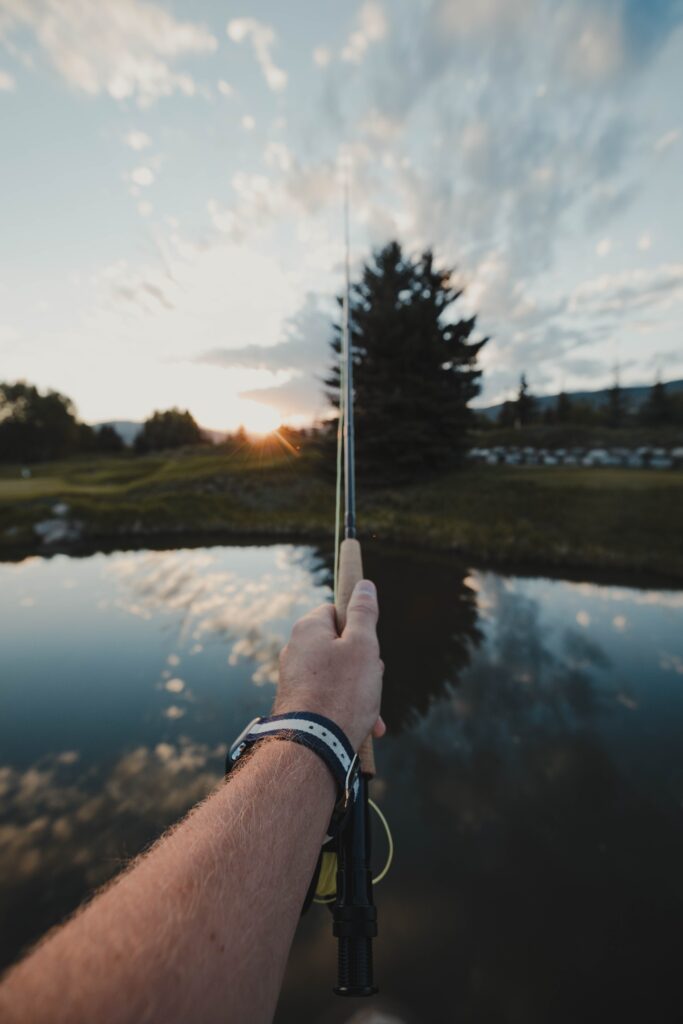
Fishing Regulations
Fishing License
A fishing license is a permit required by law to engage in recreational fishing activities. It helps regulate fishing activities and ensure the sustainability of fish populations. Fishing licenses are typically issued by state or provincial authorities and come with specific regulations regarding catch limits, size restrictions, and fishing seasons.
Bag Limit
The bag limit refers to the maximum number of fish an angler is allowed to catch and keep within a specified time period. Bag limits are set by fisheries management agencies to prevent overfishing and promote sustainable fishing practices. It is important for anglers to be aware of the bag limits for the species they are targeting and comply with the regulations.
Size Limit
The size limit refers to the minimum size of a fish that can be legally harvested. This regulation aims to protect juvenile fish and ensure their reproductive success. Anglers must measure their catch and release any fish that does not meet the size limit. Knowing and adhering to size limits is essential for ethical and sustainable fishing.
Catch and Release
Catch and release is a fishing practice where anglers release the fish they catch back into the water, unharmed. This technique helps conserve fish populations and allows for the enjoyment of fishing without depleting the resource. Proper catch and release techniques, such as minimizing handling and avoiding damage to the fish, are important for the fish’s survival.
Protected Species
Protected species are fish species that are legally protected from harvest or have specific regulations in place to ensure their conservation. These species may be rare, threatened, or of ecological importance. Anglers must familiarize themselves with the protected species in their area and take extra care to handle and release these fish properly.
Fishing Terminology
Lunker
A lunker is a term used to describe a big, trophy-sized fish. It typically refers to a fish that is significantly larger than the average size for that species. Anglers often strive to catch a lunker as they are seen as a prized accomplishment and can make for memorable fishing experiences.
Limit
The limit refers to the maximum number of fish an angler is allowed to catch and keep according to fishing regulations. Exceeding the limit is illegal and can lead to fines and penalties. Many anglers take pride in reaching their limit, as it represents a successful fishing outing.
Catch and Release
Catch and release is a fishing practice where anglers release the fish they catch back into the water, unharmed. This technique helps conserve fish populations and allows for the enjoyment of fishing without depleting the resource. Catch and release is especially important for maintaining sustainable fishing practices and promoting fish conservation.
Baitcaster
A baitcaster is a type of fishing reel designed for casting heavier lures or baits. It features a revolving spool and a thumb-operated release mechanism, allowing for more precise and controlled casting. Baitcasters are commonly used in freshwater fishing, particularly for targeting larger fish species.
Skunked
Being skunked refers to a fishing trip where no fish are caught. It can be a frustrating experience for anglers, especially when they have high expectations or have put in a lot of effort. However, being skunked is a natural part of fishing, and even the most experienced anglers have their bad days.
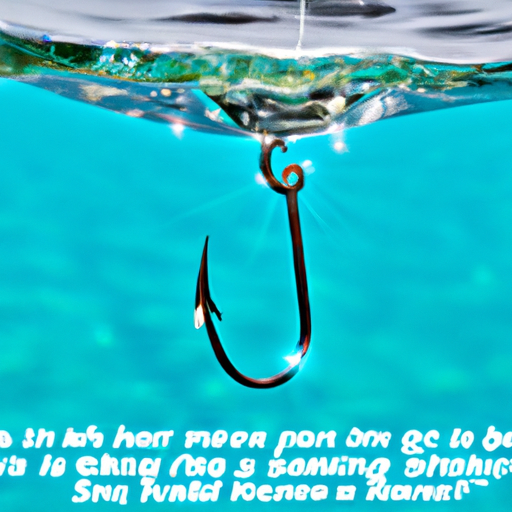
Catch Measurement
Length
Measuring the length of a caught fish is a common method of determining its size. Anglers typically measure fish from the tip of the nose to the end of the tail, also known as the “total length.” Measuring the length of a fish helps determine if it meets the size limit for legal harvest or if it qualifies as a trophy catch.
Weight
Weighing a caught fish is another way to determine its size and assess its quality. Fish are typically weighed using a scale, with the weight measured in pounds or kilograms. Knowing the weight of a fish helps anglers compare their catches, track personal records, and assess the overall health and condition of the fish.
Trophy
A trophy fish refers to an exceptionally large or impressive catch that is considered a personal achievement. The term “trophy” is subjective and can vary depending on the fish species and the angler’s goals and preferences. Catching a trophy fish is often a highlight for anglers and can be celebrated as a memorable accomplishment.
Keeper
A keeper fish is a fish that meets the minimum size limit and can be legally harvested for consumption. Anglers may choose to keep certain fish if they are within the size and bag limits set by fishing regulations. Keeper fish are typically brought home and cooked to enjoy as a meal.
Slot Limit
A slot limit is a fishing regulation that specifies a range of sizes within which fish must be released. This method aims to protect a specific size range of fish, allowing them to grow and reproduce before being harvested. Anglers must measure their catch and release any fish that falls within the slot limit range.
Fishing Safety
Life Jacket
A life jacket, also known as a personal flotation device (PFD), is a crucial piece of safety equipment for any angler. It is designed to keep a person afloat in the water and prevent drowning in case of an accident or emergency. Wearing a properly fitted life jacket is essential, especially when fishing from boats or in areas with strong currents.
Sunscreen
Sunscreen is necessary to protect your skin from harmful ultraviolet (UV) rays when spending extended periods of time fishing outdoors. It helps prevent sunburn, skin damage, and the risk of skin cancer. Choosing a high SPF sunscreen and applying it regularly throughout the day can help keep you safe and comfortable while fishing.
First Aid Kit
A first aid kit should be an essential part of every angler’s gear. It should contain basic medical supplies, such as adhesive bandages, antiseptic wipes, gauze pads, tweezers, and pain relievers. Having a first aid kit on hand allows anglers to address minor injuries or provide initial care until professional medical help is available.
Boat Safety
When fishing from a boat, prioritizing boat safety is crucial for the well-being of everyone on board. This includes wearing life jackets, following navigation rules, carrying necessary safety equipment (e.g., flares, whistle, fire extinguisher), and maintaining proper boat maintenance and condition. Understanding and adhering to boating safety regulations and guidelines is vital for a safe fishing experience.
Weather Conditions
Being aware of and monitoring weather conditions is essential for fishing safety. Weather can change rapidly and significantly impact fishing conditions, as well as the safety of anglers. It is important to check weather forecasts before heading out, stay informed about potential storms or hazardous conditions, and adjust fishing plans accordingly. Always prioritize personal safety and make responsible decisions based on the weather forecast.
